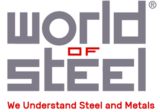General Line Containers (Industrial and Decorative)
General Line Containers (Industrial & Decorative)
An important use for tinplate is in general line containers, which are used for the storage of chemicals, dry goods, paints, tobaccos, oils, and other products.The size and shape of these containers can vary considerably, from boot polish tins to large oil drums and the methods of manufacture are equally varied including mechanical seaming, soldering, welding and cementing. However, in general, production rates are nowhere near as high as in making cans for food, beverages or aerosols and semi-automatic equipment is often employed to form individual containers.
Automated assembly lines, however, are used for many standard products such as round and square boxes, and also rectangular containers. Welding methods have also largely been introduced for containers which need to be liquid tight. Decorative tin boxes have a long and colourful history and many are today collectors’ items.The starting material is decorated tinplate sheet which is subjected to a series of manual forming operations. Joints are made mechanically, by engaging hooked edges and rolling flat, since the containers do not need to be hermetically sealed.
Lids have their edges curled over, to avoid sharp edges and to ensure a good fit on bodies.When hinged lids are needed, wire may be inserted in specially made flaps in the body wall and an extra large flange on one edge of the lid is fitted around the wire, the whole being flattened down to secure the wire in place.There is also a technique available where hinges are made without the use of wire and interlocking cut-outs are made in both the lid and the body.In the case of circular tins and square tins with round corners, the body may be made by forming a blank into a cylinder in a single draw operation and then mechanically seaming on a ring onto which to mount the lid.Distortion printed sheet would normally be used for this process.
For containers such as paint cans, up to one litre capacity, mechanical integrity may be ensured by applying a special cement along the side seam before finishing and finally heating the container to cause the cement to flow in the joint, although today many such cans are likely to be of welded construction. In the case of large 20-25 litre drums, the seams will usually be welded. Tops and bases are stamped from tinplate sheet and seamed in place. Handles are also made from tinplate and are secured by spot welding. Depending upon the application, the tinplate thickness may vary from 0.18 to 0.41 mm and the tin coating masses from E1.4/1.4 to E8.4/8.4.
Special technical packs
The fabricability and the corrosion resistance of tinplate, lacquered if necessary, make it particularly suitable for containing chemical and other industrial products such as adhesives, sealants and fuels. Rectangular packs provide a better utilisation of transport volume: 30 litre rectangular containers allow twelve to be stacked on a standard pallet, as opposed to six cylindrical ones.They also have good rigidity. Tinplate screw caps are often used for chemical packs; tests have demonstrated that such closures can withstand considerable deformation before any leakage is observed.
Two-piece cans with a diameter of 72 mm and a height of 112 mm have been produced by drawing in a multi-stage operation, starting from 0.34 mm thick killed steel base material with an E 8.4/8.4 tin coating. This type of can is stated to be resistant to 10 atm pressure without permanent deformation and is approved in Germany for use with poisonous products up to 370ml volume.Two-component containers have been produced for packaging two compounds which have to be reacted together shortly before use.
In one design, the upper portion constitutes both the lid for the lower vessel and a container for one of the reactants.The upper container has a conical form and is made by a combination of drawing and spinning, using tinplate with a tin coating of E 8.4/8.4 or E 11.2/11.2.
- Source: The International Tin Association (formerly ITRI Ltd)
